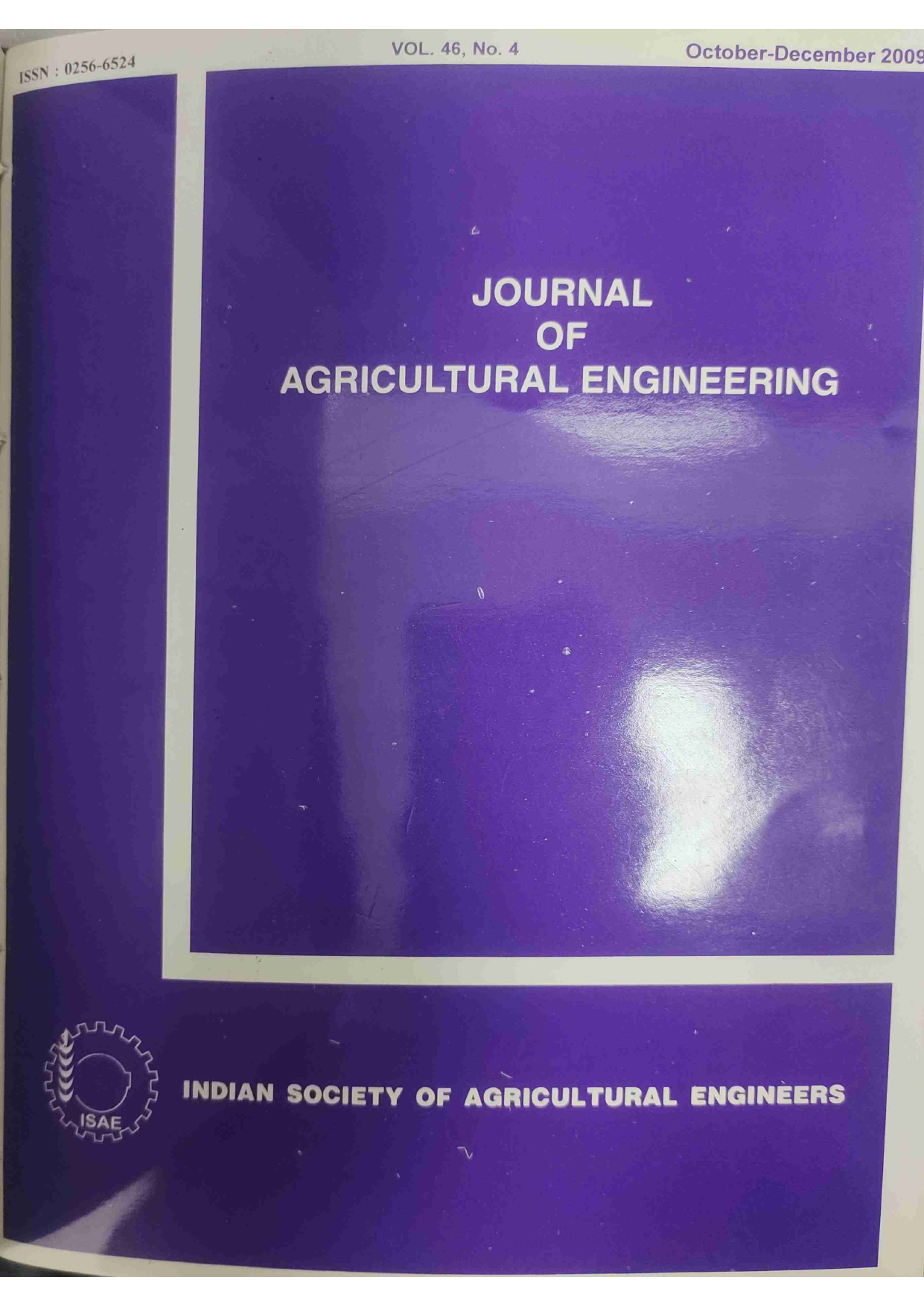Effect of Binders and Pressures on Physical Quality of Some Biomass Briquettes
DOI:
https://doi.org/10.52151/jae2009464.1389Abstract
The effects of biomass materials, different organic binders with varying concentrations and applied die pressures on the physical characteristics of biomass briquettes were studied. Three biomass materials (mustard stalk, mixed waste of tree leaves and grasses in 3:1 proportion and wood waste) along with three organic binding materials (molasses, press mud and distillers dry grain) with varying concentration of 5, 10, 15 and 20% were used for preparation of briquettes. The briquettes were formed at three die pressures of 123.42 MPa, 117.68 MPa and 112.34 MPa, and their relevant physical properties were determined. Press mud was found a better binding agent, followed by distillers dry grain and molasses. The physical characteristics like moisture content, bulk density, compression ratio and compressive strength desired for better utilization and safe handling and transportation were found to be best for briquettes made from press mud and mustard stalk at die pressure of 123.42 MPa.
References
Anon. 2008. Agricultural Engineering Data Book, CIAE, Bhopal (M.P.).
Butler J L; McColly H F. 1959. Factors affecting the pelleting of hay. Agric. Engng., 40, 442-446.
Dogherty M J O; Wheeler J A. 1984. Compression of straw to high densities in enclosed cylindrical dies. British Society for Research in Agric. Engng., 61-67.
Gadge S R; Lambe S P; Pimple A R. 2000. Densification characteristics of jawar stem stubbles residues under different binder proportions. J. Bio-energy, 1(2), 101-104.
Kashyap M M; Singh R C. 1985. Mechanical and combustion characteristics of paddy husk briquettes. Agric. Wastes, 13, 89-196.
Mani S; Tabil L G; Sokhansanj S. 2003. An overview of compaction of biomass grinds. Powder Handling and Processing, 15(3), 160-168.
Mani S; Tabil L G; Sokhansanj S. 2006. Effects of compressive force, particle size and moisture content on mechanical properties of biomass pellets from grasses. Biomass and Bioenergy, 30, 648-654.
More H G; Kande D B. 1993. Briquetting of agricultural wastes. J. Agric. Engng., 375-379.
Nasrin A B; Ma A N; Choo Y M; Mohamad S; Rohaya M H; Azali A; Zainal Z. 2008. Oil palm biomass as potential substitution raw materials for commercial biomass briquettes production. American J. Applied Sci.,5(3), 179-183.
Shrivastava P K; Maheshwari. 1981. Position paper on utilization of agricultural wastes and by-products in India. Paper presented in Annual Convention of ISAE, held at CSSRI, Karnal, Feb. 26-28.
Singh A; Jha S K; Panwar J S; Pandya A. 2002. Development of a densification machine for crop residue based animal feed blocks. J. Agric. Engng., 39(1), 9-15.
Singh A; Jha S K; Panwar J S; Pandya A. 2004. Studies on feed block formation using mustard straw. J. Agric. Engng., 41(2), 13-15.
Singh R N. 2004. Equilibrium moisture content of biomass briquettes. Biomass and Bioenergy, 26(3), 251-253.
Yaman S; Sahan M; Haykiri-accma H; Sesen K; Kucukbayrak S. 2000. Production of fuel briquettes from olive refuse and paper mill waste. Fuel Processing Technol., 68, 23-31.














